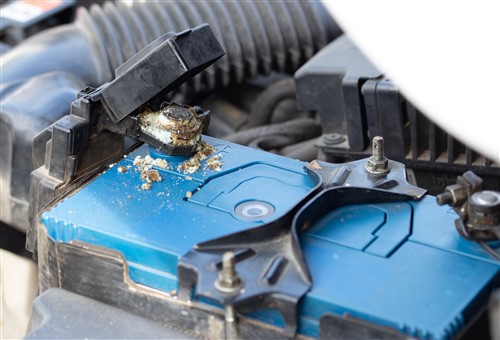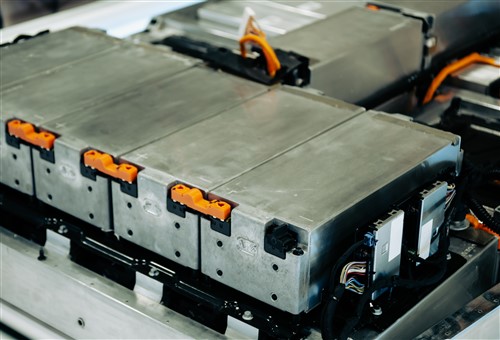
In Part 1 of this two-part article, we looked at some of the technical peculiarities of a 2014 Subaru XV hybrid that this writer was invited to consult on. Now, in Part 2, we look at how the multiple issues that resembled the layers of an onion this vehicle was beset with were resolved, but to provide some context, we will again list the various trouble codes we found, as well as the systems that were involved. Consider the table below-
|
SYSTEM |
DTC |
|
ENGINE |
P0420 |
|
ENGINE |
P05A0 |
|
AIRBAGS |
B1650 |
|
BATTERY ENERGY CONTROL MODULE |
P0A7E |
|
DRIVE MOTOR CONTROL MODULE |
P1C22 |
|
HYBRID POWER TRAIN CONTROL MODULE |
P1C18, U1676, U1720, U1711, P1C14, P0620 |
As mentioned in Part 1, this writer had never encountered this particular Subaru model before, and after obtaining at least some useful technical information on the vehicle from diverse sources, the trouble codes in multiple systems seemed to be related in the same way that the layers of an onion are related. Put differently, it seemed that no single trouble code on the vehicle could exist without all the other stored trouble codes being present.
Against the above background, this writer decided to start peeling this onion by investigating what seemed to be the most convenient point, based on the assumption that resolving this code might resolve some other codes as well. Bear in mind that this writer did not have access to sufficient repair/service information to form a cohesive diagnostic strategy but with that said, let us look at the first layer-
As with active grille shut systems on all other vehicles, the active grille shutters on this Subaru improved the vehicles' aerodynamics and assisted with the engine's thermal management. This much was known, but reading the section on the shutter system in the repair manual revealed that the shutters communicated with several other systems and their control modules over a new-generation LIN (Local Interconnect Network) data bus with a respectable baud rate of 19,200.
In this case, the relevant LIN system connected the-
- and the restart battery sensor. A quick inspection of the front of the vehicle showed that the lower part of the front bumper was buckled inwards, possibly as a result of a collision with road debris. Moreover, the damaged bumper had been forced far enough inwards to break two shutter vanes, which is what caused the rest of the assembly not to move when commanded to by the ECU.
Although the annual did not explicitly say so, it was more than likely that the grille shutter fault caused all the communications codes because the LIN data packages from the grille shutter module could not be decoded correctly by the other implicated modules. In practice, the other modules expected to see the grille shutters in the closed position under some operating conditions, but they received a persistent open signal, instead. From that perspective, it seemed a reasonable assumption that replacing the grille shutter assembly and its actuator would resolve the LIN system communications codes.
And so it turned out to be: installing and integrating the new grill shutter assembly (after straightening out the front end damage somewhat), none of the communications codes returned after another lengthy test drive- no doubt because the LIN data packages could now be sent, received, and decoded correctly. Just to be sure, though, this writer connected his oscilloscope to the LIN system, which showed that there were no signal drop-outs, inversions, or other signal anomalies in the LIN signal when the grill shutters were actuated via the bidirectional controls on a capable scan tool.
Based on this result, the communications codes were considered resolved, which brings us to layer 2-

Having long ago learned the importance of checking on the accuracy of trouble code definitions that refer to hybrid power systems, this writer thought it might be a good idea to consult several authoritative trouble code databases to check the definition of code P1C22 on this particular Subaru hybrid.
As it turned out, all sources consulted confirmed that trouble code P1C22 actually referred to the restart battery and not to the auxiliary battery. However, since the vehicle had now been in the workshop for more than a week, this writer also thought that it might be a good idea to not waste any more time hunting down the source of the discrepancy but to test both the auxiliary and restart batteries with his diagnostic charger, instead.
It turned out that the Subaru manual had it wrong: the diagnostic charger showed that the auxiliary battery was in excellent condition, while the restart battery had two bad cells, hence its low voltage of only 10.1 volts. Of course, this explains why the STOP and GO system sometimes struggled to start the engine, when in fact, with a voltage as low as 10.1 volts it should not have started the engine at all but as the old saying goes, the age of miracles is clearly not yet over.
Replacing the damaged battery was the obvious remedy, but the problem was that this battery was not available in the aftermarket. It could only be sourced from an authorized Subaru dealer for an eye-watering $950, which the Subaru’s owner agreed to, albeit extremely reluctantly because we could not tell them why the little battery was so expensive, and the dealer we sourced the battery from was not prepared to tell us, either.
Long story short, though, we installed the new battery and followed the subsequent installation procedure specified in the manual to the letter to avoid issues later on. This procedure required that both battery terminals be removed for ten seconds before starting the engine to allow the electronic throttle body to perform some self-diagnostic tests, and for the brake pedal stroke sensor to relearn its basic position settings.
With the restart battery’s issues resolved, let’s look at the next layer-

Efficient regulation of the HV battery pack is crucially important on any hybrid or EV vehicle since abnormally high battery temperatures will destroy the battery in fairly short order. Moreover, abnormally high or persistently high battery temperatures will set code P0A7E, which, if happens on this Subaru model, will deactivate the regenerative braking and automatic Stop/Start systems- both of which have safety implications.
So, with that in mind, this writer read through the section in the manual that dealt with the HV battery pack again and discovered that in some cases, this code could be set in error as a result of a programming error. This fault involved the fact that when the ignition was switched off, the battery cooling fan was shut off as well, which caused the battery pack to soak up heat much like engine coolant soaks up heat from a hot engine when it is shut off. Thus, since the battery pack could not shed its heat effectively, the P0A7E over temperature code would set every time the battery's cooling fan stopped working when the battery was at or near its optimal working temperature.
Using his newly acquired reprogramming disc, this writer performed the required programming steps, with the process taking no more than about 5 minutes. As a test, we then took another long-ish test drive to warm up the HV battery pack, and once back in the workshop, we switched off the engine to see if the battery cooling fan remained running. It did, and code P0A7E did not return, which proved that another layer had been peeled from this onion, which brings us to the last layer this writer was involved with this being-
This was the easiest of the codes on the vehicle to fix because it did not involve any actual work; all that was required was to park the vehicle in the sun with all the doors and windows open.
Of course, this writer did not know this at first since the repair manual stated that code B1650 is merely an informational code that refers to some unspecified fault in the occupant classification system. The manual also stated that the best way to determine the nature of the fault was to interrogate the Occupant Detection Control Module (ODCM), which eventually told us that the actual fault code to investigate was B1670, which referred to an abnormal reading from the passenger seat’s sensor mat.
Since there was nothing obviously wrong with the seat, we launched an online search for TSBs that addressed this particular issue, and after about two hours or so, we turned up just such a TSB. Service Bulletin 07-134-18 explicitly said that no components must be tested or removed from the seat before checking the seat for dampness, even if the dampness was not immediately apparent and since we could not detect any dampness we simply did as the TSB advised, which was to park the vehicle in the sun with the doors and windows open.
It is important to note that the TSB expressly forbade the use of hair dryers or other similar heat sources to speed up the drying process since the methods invariably damaged the sensitive sensors in the seat cushion.
After baking in the sun for about three hours, we took another long-ish test drive and checked for fault codes again. None returned except the catalytic converter code, meaning that this writer considered the vehicle repaired- at least from his perspective. Anyway, there was no reason to believe that the workshop staff could not replace a catalytic converter successfully so he made up and presented his invoice, which was paid on the spot, leaving us with this-
Although none of the faults on this Subaru hybrid were particularly difficult to resolve, there is a moral to this story, and it is this: don't rely on luck when you encounter a vehicle that you are not familiar with, or if you don't have access to sufficient service and repair information.
This writer got lucky this time because several of the faults on this vehicle were the result of one active fault, so resolving that code resolved the others as well. However, while blind luck is never a viable substitute for a logical diagnostic process because luck can run out at any moment, the fact is that your intuition will never let you down. Put differently, this means that if you learn to trust your gut feeling, you will always find a way to figure out multiple problems on vehicles that resemble unpeelable onions.
Then again, there is always a chance that you might get lucky if you choose the correct point at which to start a complex diagnostic process on a vehicle you know little to nothing about.